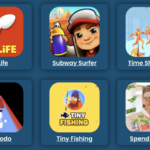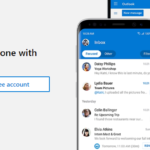Trezor One wallet is not just a hardware wallet, it’s a fortress for your cryptocurrencies. With an intuitive setup process, users can easily generate a secure PIN and recovery seed, putting them in control of their digital assets. The device employs cutting-edge cryptography, ensuring your private keys are stored offline, away from potential online threats.
Contents
Advantages of Trezor one.
- Ultimate Security: Trezor One offers unparalleled security by keeping your private keys offline. Its PIN code and recovery seed add an extra layer of protection.
- Versatility: Compatible with a myriad of cryptocurrencies, Trezor One caters to the diverse needs of the crypto community.
- Mobile Accessibility: Connect your Trezor One to your Android device, allowing you to manage your assets on the go.
Optimizing Your Trezor One
- Regular Updates: Stay ahead of potential threats by regularly updating your Trezor One firmware. Check for updates on the official Trezor website.
- Handle with Care: While Trezor One is durable, protect your investment by using a secure and protective case.
- Private Environment: Ensure you use Trezor One in a secure and private setting, minimizing the risk of unauthorized access.
Trezor one device not compatible:
Trezor hardware wallets can be linked quite easily to any Android phone using a USB cable but cannot connect to iOS devices. Trezor One, an integrated crypto exchange tool has limited support for iOS devices and various browsers as it only works with Chrome and Firefox browsers.
The lack of support that Trezor wallets have for iOS devices and the various browsers is justifiable to consider for Apple users.
Trezor one device not connected:
If Trezor one device doesn’t light up just after connecting to the cable directly, then consider and follow these methods to get connected.
Check the connections.
Firstly, check whether the display started after connecting to the device.
If the display does not light up after connecting, try different ports and USB cables that transmit the data. Connect the Trezor with the cable directly and don’t use a USB hub or another similar device. If it still doesn’t light up then try connecting your Trezor to another Computer. Plug in the cable properly at both ends.
Install the latest Trezor One Bridge version
Download the latest Trezor Bridge and complete the installation. After completing the installation, verify if the Trezord process appears in the Task Manager. After these changes, Trezor One will now be recognized. In case it’s not, then go ahead to the next move.
Reinstall Trezor One driver.
If there is a warning sign at the corner of the Trezor One icon, it means that the applicable driver is corrupt. In this case, reinstall the driver. After this process, check the Trezor one not recognized issue.
Disable Firewall and conflicting apps.
In some cases, the built-in Firewall, third-party apps, antiviruses, or some other apps may produce difficulties in the functioning of Trezor, and then it will not be recognized.
To fix this case, disable all these types of apps situated on your computer. But, ensure to not disable the Firewall or antivirus for a long time.
FAQs
1. What is Trezor One, and why do I need it?
Trezor One is a hardware wallet designed to secure your cryptocurrency holdings. It provides an offline storage solution, safeguarding your assets from online threats such as hacking and phishing.
2. How does Trezor One ensure security?
Trezor One uses advanced cryptography to keep your private keys offline. It features a PIN code and a recovery seed for backup, ensuring that your assets remain safe even if the device is lost or stolen.
3. Is Trezor One compatible with different cryptocurrencies?
Yes, Trezor One supports a wide range of cryptocurrencies, including Bitcoin, Ethereum, Litecoin, and many more. Visit the official Trezor website for the complete list of supported coins.
4. Can I use Trezor One with my smartphone?
Yes, Trezor One is compatible with smartphones. You can connect it to your Android device using an OTG (On-The-Go) cable, allowing you to manage your assets on the go.
5. How do I set up Trezor One for the first time?
Setting up Trezor One is a straightforward process. Connect it to your computer, follow the on-screen instructions, and create a secure PIN code and recovery seed. Make sure to keep your recovery seed in a safe place.
6. What happens if I forget my PIN or lose my Trezor One?
Don’t worry! Your funds are still safe as long as you have your recovery seed. You can use the recovery seed to restore your wallet on a new Trezor device.
7. Can I recover my Trezor One wallet on a different device?
Yes, you can recover your wallet on any Trezor device or compatible software wallets that support BIP39/BIP44 standards.
8. Is Trezor One resistant to physical damage?
Trezor One is designed to be durable, but like any electronic device, it can be damaged if not handled with care. Keep it in a secure place, and consider using a protective case.
9. How often should I update the firmware of Trezor One?
Regularly check for firmware updates on the official Trezor website. Updating your firmware ensures that your device has the latest security features and improvements.
10. Can I use Trezor One on a public computer?
It is not recommended to use Trezor One on public computers due to security concerns. Always use your device on a trusted and secure computer to avoid potential risks.
Conclusion
In conclusion, Trezor One offers a secure and user-friendly solution for managing your cryptocurrencies. By understanding its features and following best practices, you can enjoy peace of mind knowing that your digital assets are safe and accessible. If you have more questions, feel free to explore the official Trezor documentation or contact their support team. Happy Hodling!






